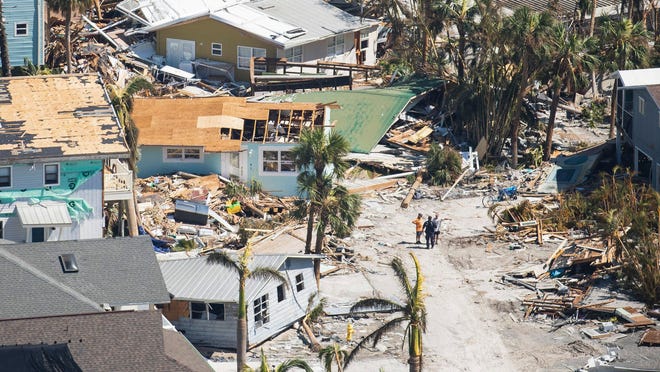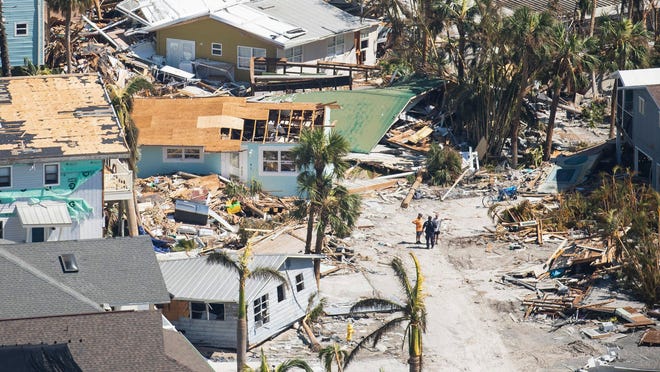- As the effects of climate change grow more dire, danger is rising for Americans in floodplains, coastal marshlands, wildfire-prone areas and swaths of land struggling with drought.
- When disasters strike U.S. communities, taxpayers often pick up the tab.
- Some experts see a future where people slowly move away from higher-risk areas. Some think a more dire correction is coming.
More than a month has passed since Hurricane Ian struck the country, killing at least 119 and potentially causing more than $100 billion in damages. Many survivors are now facing a gut-wrenching question.
Should I stay or should I go?
In the aftermath of such natural disasters, residents and politicians alike often declare they will stay and rebuild. For Ian, that message is coming all the way from the top.
“The key here is building back better and stronger to withstand the next storm,” President Joe Biden said in September as he surveyed damage in Fort Myers, Florida, alongside Governor Ron DeSantis.
But inevitably, some residents will throw up their hands and walk away. Others plan to hedge, like Cindy Smith, a North Port, Florida resident who told a reporter she’d buy a mobile home after her home was flooded out by Ian. “That way I can flee,” she reasoned.
The question of what to do after disaster strikes is becoming increasingly perilous for the nation. For decades, many experts have warned that too many Americans are living in harm’s way: in floodplains and coastal marshlands, in…


























































